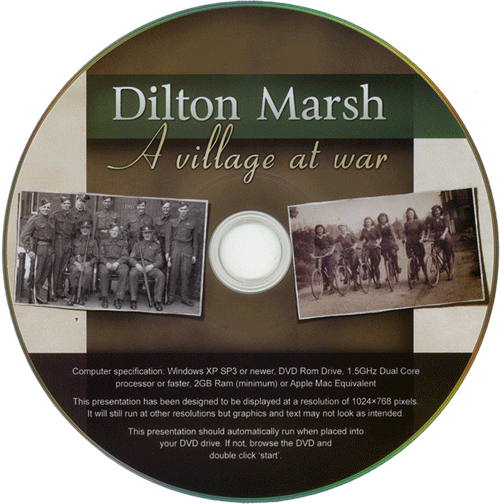

The “A Village at War “ CDs
The “A Village at War “ CDs are now available from Graham Noble and are free of charge. This of course will be on a first come first served basis.
I am available on g.rc.noble at btintetrnet.com and phone contact is 01373 858561.
CDs will also be available at our next talk.
Summary
We explain here what we were trying to achieve and where we have got to; basically picking up on black troops and widening it to include others we have found
Dilton Marsh History society set up a project to look at the 2nd World War and its impact on the village. Part of the project is to do with the impact of American troops on the area.
The initial brief was to look at the black American troops who were based locally, including any memories local people might have of them. Initial research also showed that a large number of white American troops were also based in and around Dilton. We therefore widened the study to look at some of these troops in the same way.
It has been very difficult to identify the troops actually based in Dilton and the surrounds, as the records only indicate “Westbury” as a location. There is clear evidence of camps close to Dilton however and a dog tag found gave clear evidence that troops were close by and that they were black. We plan to do further research in the area it was found, including ground radar and metal detectors when time allows.
Anecdotal evidence from interviews with local Dilton people, who were around at the time, suggests that the Americans were quite frequently in and about the village and used the village hall as a Saturday night venue. Some remember them parading through the village.
Because of the difficulty in identifying the troops actually based at Dilton we have taken a view on all the troops recorded in the Westbury area who may well have had influence on the village.
We estimate, from the records, that at peak, there were between 12 and 25 1st Army Companies in and around the area, with a total troop headcount of between 2,000 and 5,000. (based on average size of an American Army Company). The bulk of these in the local area were Logistics support of various types, from mechanics to cooks and gravediggers. The last being a role held by the African American troops and something they were significantly upset about as they felt they had joined up to fight. More on this later.
The bulk of troop build up appears to have been in preparation for D Day with troops recorded as being in the area from February 1944 and most having left the area by September 1944, a mere 8 months. The impact on the area and on the memories of local people seems therefore quite remarkable today. However when a local of the time (Westbury resident) make comments such as “I never went as far as Westbury Leigh as that was too far away from home” it makes you realise that the world was a very different place then and 5,000 people turning up over a very short period of time would have had a big impact.
We have also carried out some research into the “lost dog tag” and traced the owner back to his home town, but he apparently died in California some time ago.
Of other troops we have records of white troops in the area from photos taken, one of which has all present in the photo listed on the back. We are carrying out further research on this at present.
